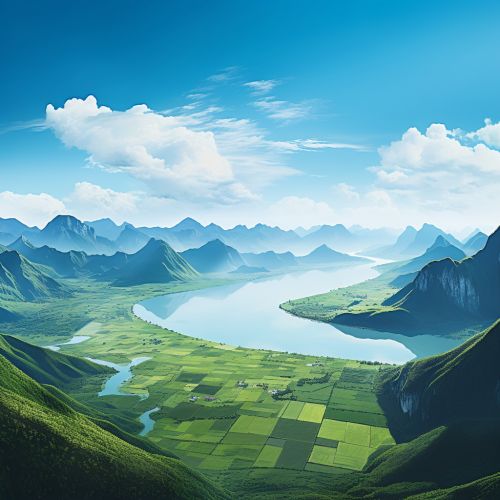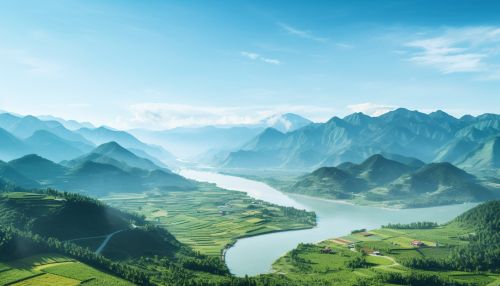Yangtze Plain
Geography
The Yangtze Plain, also known as the Yangtze River Plain, is a large and fertile plain located in the eastern part of the People's Republic of China. It is one of the most densely populated regions on Earth and is home to a significant portion of China's population. The plain is named after the Yangtze River, the longest river in Asia and the third-longest in the world, which flows through it.


Geology
The Yangtze Plain is primarily composed of alluvial soil, which is the result of years of sediment deposition by the Yangtze River and its tributaries. This has resulted in a landscape that is predominantly flat and low-lying, with an average elevation of less than 50 meters above sea level. The plain is underlain by a variety of geological formations, including the Yangtze Platform, a large cratonic block that forms the stable continental crust of the region.
Climate
The climate of the Yangtze Plain is classified as a humid subtropical climate, with hot, humid summers and cool, damp winters. The region experiences a monsoon season, which typically occurs from June to September. This monsoon season, along with the fertile alluvial soil, makes the Yangtze Plain one of the most agriculturally productive regions in China.
Flora and Fauna
The Yangtze Plain is home to a diverse range of flora and fauna. The region's vegetation is primarily composed of deciduous broadleaf forests, with species such as the Chinese Elm and the Ginkgo Biloba being common. The plain is also home to a variety of wildlife, including the critically endangered Yangtze River Dolphin and the Chinese Alligator.
Human Settlement and Economy
The Yangtze Plain has been a center of human settlement and economic activity for thousands of years. Today, it is one of the most densely populated regions in China, with major cities such as Shanghai, Nanjing, and Wuhan located within its boundaries. The plain's fertile soil and favorable climate make it an important agricultural region, with crops such as rice, wheat, and cotton being grown in large quantities. In addition to agriculture, the Yangtze Plain is also a major industrial region, with industries such as steel production, chemical manufacturing, and automobile manufacturing being significant contributors to the local economy.
Environmental Issues
Despite its economic importance, the Yangtze Plain faces a number of environmental challenges. These include air and water pollution, soil erosion, and habitat loss. In recent years, efforts have been made to address these issues, with initiatives aimed at reducing pollution, promoting sustainable farming practices, and conserving the region's biodiversity.
